How To Clean And Preserve Glass Plate Negatives
2
A Brief History of Photography- The Photography Timeline
In 2021, almost every one of us acknowledges the massive impact of photography on modern culture. The techniques and artworks of different photographic genres are both influencing and redefining culture, trends, and traditions. From the very beginning of civilization & the history of photography, expression through photographs was cultured as a storing medium of communication. Aren't those black and white photos create nostalgia? The photographs from the past is a powerful and authentic way to discover the lifestyle of our ancestors. And though art and technology have come a long way, it is the history of photography that keeps our curious spirits high.
Whether you are a novice photographer or a selfie enthusiast, finding the historic connections of capturing timeless moments will definitely interest you.
Today, photography is one of the most favorite past-time and a lot of people are making it a profession. And with highly-calibrated hardware, taking quality photos from cameras, phones or tablets is even faster than the blink of an eye.
However, not everyone knows how this culture-influential art has been invented and developed over time. Photographs in past were the reflection of life that the people in different eras live and breathe. The journey of photography is fascinating and demands to go into great details. Therefore, we have tried to take a step back in history to figure out the highlights and milestone developments of this scientific art.
Today in this content, we will have a flashback on how those amazing techniques and art revolutionized and how it came to become the era of modern photography.
History Of Photography Timeline: A Preview
Before Photography Invented
Early Experiments
Humans are very curious and creative. And that is why we are constantly evolving. We can never rest. Probably that is a reason why photography has reached its zenith in just two centuries since the modern discoveries. Invented in the 19th century (the 1830s), this scientific art came to the limelight after ten years. But the idea was around us since 400 BC when the Chinese philosopher and inventor Mozi coined the camera obscura as the 'hidden treasure'. He then explained that the image in a camera looks inverted because light travels in a linear manner.
For your information, before the invention of the camera or creation of photography, people knew how the entire thing works! They didn't know how to process the images and how to convert those black and white negatives into color photographs, but they learned to process images at walls or pieces of paper.
Though there was no camera by the time we are talking about, there was an ancient gadget people use to create something like printed photographs. The name of the gadget is called The Obscura.
While Aristotle explained camera obscura in 300 BC, Abd el-Kamir the Arabian alchemist discovered the photosensitive emulsion despite having no idea of camera obscura.
The Dwan of Photography
Before we go further with Obscura let's go bit fast forward reach to the 16th century when an Italian scientist Giambattista Della Porta experimented and explained in detail the use of camera obscura with a lens. As the process was completely manual, the images created by most artists differ in quality depending on their drawing skills.
Alike the primitive camera, magic lanterns, and early projectors also gained popularity during this time. They use the same optical principles to project the images but the medium were glass slides and walls.
Here, it is important to mention the contribution of German anatomist Johann Heinrich Schulze. He actually gave a successful demonstration of silver salt darkening, the phenomenon discovered in 100 BC. This experiment in 1727 with the primitive camera laid the foundation of modern photography technology. However, the world had waited for another century to have a permanent image.
Meanwhile, the search for a mechanical process to produce images was continued in various parts of the world.
The First Photograph
While we will be discussing camera obscura in detail in the next section, you must have figured out that this not-so-technical box has always been the base of every experiment.
Same is the case with the first recorded photograph the journey of which was started with an amateur French inventor Joseph Nicephore Niepce. To create heliographs he devised a method where an engraving was oiled to make it transparent. Niepce then placed it on a plate coated with a light-sensitive solution of bitumen and lavender oil. Exposing the setup to sunlight for several hours resulted in an accurate copy of the engraving.
Niepce continued his experiments of sun drawing or heliography onto stone, glass, zinc plates and finally pewter plates in 1826. This determined inventor finally produced the first successful photograph of nature by fitting a pewter plate in camera obscura and exposing it to sunlight for almost eight hours. This became the first recorded photo in history that did not fade quickly. Although his images were underexposed and too weak to be etched, his experiments proved extremely helpful for future progress.
When was photography invented?
We can say 1826 AD. Right? May be Yes. But, the process was on going.
Obscura- The Ancient Camera
Obscura is a Latin word that means Darkroom. It used at the ages of 13-14th centuries. In history, there was a manuscript developed by Arabian scholar Hassan IBN Hassan and we got to know how it works.
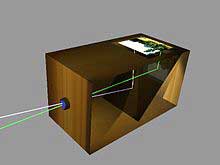
How Obscura Works?
Obscura or Camera Obscura is a dark space in such a shape that it had a hole in the wall of the box at one of the sides. The hole should be small enough for maintaining the proposition of light that came up into it.
The light comes through the tiny hole and it created an image of the surface it meets( as an example- the wall of the box). The image mirrored and tends to be upside down. So the image inverted. But still, it was able to capture the colors of any object that are in front of it. And eventually, from that core concept, modern cameras are created.
In fact, a matter of wonder is, still joe the same principle is capture images of anybody. But the equipment that is used in catching the light and letting light come through, is way smarter. However, the invention Obscura considered to be an early milestone in the evolution of photography.
Evolution of Pre-Camera Photography
The way photography was developing in the camera history timeline, define to be a killer form of fine arts and thus, people of all ages and centuries played an important role in the evolution of photography. Befoe inventing the camera, in the ages of Renaissance, photography principles widely used by artists like Michelangelo, Leonardo, and so many others.
In fact one of the Italian scholars of that age named Giovanni Battista Della Portacentury explained in one of his books that, how the concept of Camera Obscura make painting easier. Using these principles, he was able to project the images of people outside of the Obscura on a wall. In this case, the Obscura was like a big room although.
But this event has taken the art into a new dimension. Also, there is no doubt that the Obscura, was the early prototype of the modern camera.
The Invention of Camera
Photography had become familiar as a form of art at the 1840s. Before that, almost 10 years ago, at the 1830s, photography invented. Since then, photography has become the most growing hobby of people worldwide and it becomes a multi-billion dollar industry. But all of the journeys started back when the camera invented.
The First Photographic Camera
As the history says, the very first photograph that taken using the camera taken at 1825 by a French Inventor named as Joseph Niepce. It represented a view from the window at the city- Le Gras. The merit in the picture was that this was the first photograph that was able to both be taken and preserved. Though the exposure was almost 8 hours and because of this, the quality was nothing compared to modern photographs.
But still, from that event, the age of digital photography began. Because, before this historic event, people somehow knew how to project pictures of anything into a board, but there was no technique to preserve the light. Joseph came up to be the first person to introduce techniques of storing photographs permanently in the history of photographs.
Firstly, he used a petroleum derivative called Bitumen of Judea as storage. It worked quite like the modern silver negatives. Bitumen of Judea hardened according to the intensity of light exposure that falls onto it. Afterward, the unhardened material washed away to get the black and white picture.
A Glance At Evolution of Camera Technology
Here is a list of some discrete facts that you may find interesting. All of these are top picks from the entire timeline of photography- since the Greek and Chinese evolution.
- The Ancient Camera: The ancient Greeks and Chinese use a mechanical device named Camera Obscura (described above) that could project an image of an object on a screen. This invention played a big role in the evolution of photography.
- Developing Practical Cameras: Many designs had been proposed on the real working camera since the 1800s. But none of those couldn't come to be practically efficient until the late 1800s.
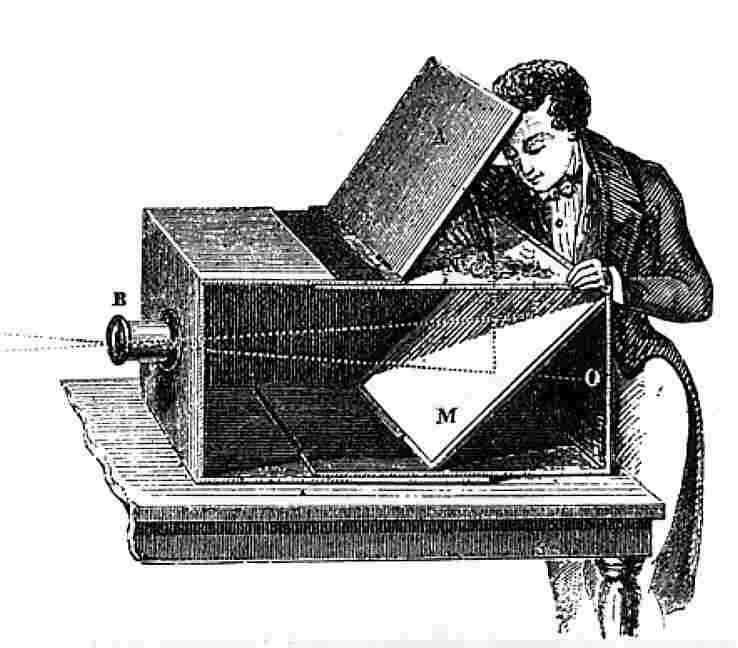
The Evolution of the Camera
Afterward, cameras that can work and store images on a screen, developed.
- The Kodak Camera: The Kodak Camera, which was one of the earliest camera models, developed by George Eastman at 1888 and released for sale.
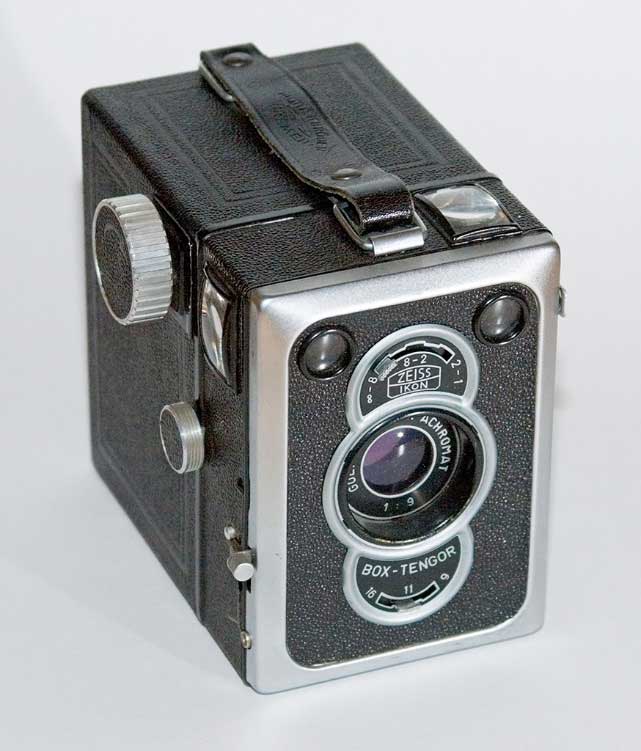
The name is remembered because it successfully introduced the usage of films on camera. Although, it was a pretty simple design along with fixed shutter speed and fixed focal length.
- Lucia- The First Compact Camera:
- At the year of 1913, Oskar Barnack, a German optical engineer, presented a model prototype of compact camera called Lucia. It contained a 35mm lens and later on, it put into mass production in the year of 1925.
- Reflex Camera: Reflex cameras designed and developed massively at the years of the 1920s and 1930s.
- First SLR(Single Lens Reflex) Camera: The concept of seeing the image before capturing it introduced by SLR(Single Lens Reflex) cameras. It was in the year around the 1930s. To visualize the image that will be captured, the designer used a prism and afterward it turned to be the key concept of modern DSLR (Digital Single Lens Reflex) cameras.
- Polaroid Camera: Polaroid cameras was an evolution of the industry because, for the first time in photography technology, it allows the cameraman to take and print the pictures instantly. A special chemical process used then in Polaroid cameras to print the image captures within almost one minute.
Although, the popularity of these models took off when another model of cameras,named as Polaroid Model 20 Swinger introduced at 1965. This version of Polaroid camera made history by being one of the most selling cameras of all time.
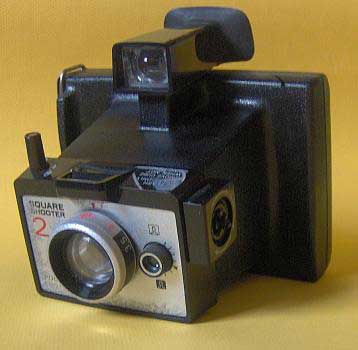
- Disposable Cameras The next addition of camera technology bumped up with disposable cameras. Although the concept of disposable cameras was around during 1949, it actually showed up in the 1990s.
By then, the Kodak model cameras gained much popularity. Kodak cameras were so much popular because of their cheap rate and they perfect for event-based photo sessions like birthdays, weddings, etc.
Cameras With Digital Image Sensors: A real revolution in history was the introduction of digital image sensors in the cameras.
This tech-first promoted and invented by Willard S. Boyle and George E. Smith at the year of 1969. In fact, because of the significant role of their invention, the scientist's pair awarded the Nobel prize recently (2009).
First Commercial DSLR(Digital Single Lens Reflex) Camera: The most popular digital camera of the current age, named DSLR first introduced commercially by Kodak at the year of 1991.
Afterward, with a little evolution to the technology, photos and videos developed to be stored in SD memory cards as JPEG format.
Modern DSLR Cameras With a lot of improvements of DSLR cameras, it had turned into the magical device to take pictures of much higher resolution and pixels.
The popularity of digital cameras started to explode at around the 2000s as photography become so smarter and the photography costs decreased. Modern technology with digital cameras is being improved day by day with the introduction of electric viewfinders and touch-pads.
Brief History Of Photography: Infographic

Names To Remember in Photography History
The invention of photography is considered to be a scientific achievement and a great addition to the industrial world. Apart from the scientific and business perspective, it contains a great art value that represents day to day life in a frame. The artistic concept of photography was first introduced by this man named Alfred Stieglitz.
Alfred Stieglitz
An American photographer and modern art promoter, he was instrumental in making photography an accepted art form. He is also known for his well-known art galleries where he worked to introduce many Avant-grade European artists to the USA. Alfred stressed that, apart from the painters, photographers are also and should be considered as artists.
Contribution of Alfred Stieglitz
The greatest contribution of Alfred into the history of the digital camera is the representation of day to day life into a still frame. Besides photography, Alfred, interested in Avant-garde. He owned a few famous art galleries in New York and through these, he introduced some great event-grade artists to the nation.
Alfred pointed out that, apart from the painters, the world considered photographers as artists. He demonstrated that the quality of photographs not only depends on the content of the picture only. It also depends on the conceptual representation of the photographer himself.
The photographer himself can manipulate a lot with the contents present in from the lens. Eventually, due to his restless efforts, photographs of different exhibitions started to be in judgment by photographers apart from artists.
Felix Nadar
Felix Nadar is a French caricaturist and journalist in his early life. Later when the era of photography started on, become a photographer. He is especially remembered for contributing an important factor into photography- using artificial lights in photography. An interesting fact is, Nadar was a friend of famous fiction writer Joules Verne, and thus two friends were inspired by each other.
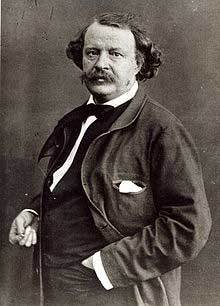
Contribution of Felix Nadar
Apart from the successful application of artificial light, Nadar was also famous for another great concept. Portrait photography, which is one of the most populated sectors of the modern photographic industry- was firstly introduced by Nadar. By that time, Nadar was known as close friends of many famous personalities like Joule Verne, peter Kropotkin, Alexander Dumas and George Sands.
Nadar introduced portrait photography with these sorts of famous personalities, and eventually, the concept of portrait photography spread out like wildfire.
Joseph Nicéphore Niépce
Who invented photography? We can say the name "Joseph Nicéphore Niépce".
Considered as one of the fathers of photography, this French inventor is considered as a pioneer in the field.
He achieved the first successful fixation of an image produced with one camera obscura.
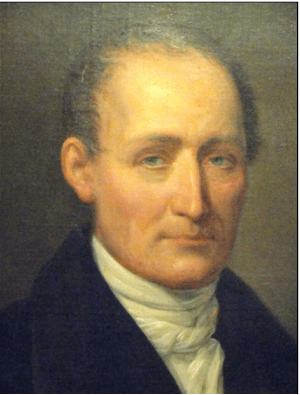
Contribution of Joseph Nicéphore Niépce
- Niépce is remembered for developing a technique called 'Heliography' meaning 'Sun Drawing'
- He developed the first photograph
- Developed a technique used to create the world's oldest surviving product of a photographic procedure,
- Know to create a print made from the photoengraved printing plate.
- In late years, he even used a primitive camera to develop the oldest surviving photo of a real-world scene.
Henry Cartier-Bresson
Photojournalism is one of the most studied subjects in the world of media and fine arts. But many of us don't know who is the actual behind the scene person is. Henry Cartier-Bresson, A French photographer was the first person to bring photojournalism into daylight. Personally, he has gathered photographic experience from around the globe.
Contribution of Henry Cartier-Bresson into the History of Photography
We are thankful to Henry for many reasons. He is the first person to tell the world that photography can be a solution to fix the eternity. When his first exhibition on portrait photographs took place at NY, the portrait pictures caught the attention of the world because being captured with a new dimension. Since then, people had been trying different versions of portrait photography.
Evolution of Photo Development Technology
Photographers use cameras to capture lights that come from the object that we photograph. But after clicking a photo on the camera, the next task is to develop and print the photo on paper. A lot of consequences had been noticed in this photo development technology. From the early age of black and white photo printing to the history of color photography- it has been an enormous journey.
Here in this section, we will overlook at the evolution of the photography history timeline that we use to develop the photos after taking them.
Negative to Positive Process
Technologies of printing positive photos from negatives invented many years after the first photographs taken. The creation and invention of negative prints of photos from where multiple positive photos, captured by Henry Fox Talbot who was an English botanist and also a mathematician of contemporary Daguerre.
Talbot used a silver and salt solution to make it sensitive to light exposure and intensity. After putting the chemical on a paper, he exposed the paper to light. The background became black and the subject line subdivided into many shades of gray.
From the negative image, Talbot made several contact points that reversed the lights and intensities to create an original and detailed picture. In 1841, he successfully developed a model of negative to positive image printing and thus he called it
Tintypes
After Calotype, there was another technology that appeared in photography history. Though the patent was taken in 1856, the evolution took place after Calotype had already familiar. There was another medium of tin or iron-based materials.
A layer of light-sensitive material provided on the metal sheet and yield the image based on the light intensity and exposure. Unless the material type, the working process was almost same like Calotype. So, both of these technologies were competitors of each other back then.
Wet Plate Negatives
In 1851, an English Sculptor Frederick Scoff Archer introduced another sort of technology for fast and accurate photo development. It called wet plate technology. There in this process, a viscous solution of collodion was used along with coated glass. Silver salts used as the light-sensitive material.
The model develops a perfect negative because it was glass instead of paper. From this invention, photographic development had been taken to the advanced level as the light-sensitive metal could be coated on glass sheets instead of papers. However, there were several disadvantages of the wet plate negatives.
They had to be developed so quickly so that the image can be printed before the emulsion dried. So, in the field, photographers had to carry a portable darkroom with them.
Dry Plate Negatives (With Hand Held Cameras)
In the year of 1879, the invention of the dry plate has revolutionized the photographic concept and decreased the cost to a minimum. In fact, it was a glass plate along with gelatin emulsion.
Dry plates one can store for a particular period of time. So after the invention of dry plates, photographers didn't need to carry the portable darkroom anymore. Hiring technicians to develop images instead of working in person was also a common trend of photographers of this age. In the dry chemical process, it absorbed the light so quickly. So the practice of carrying hand-held cameras started in this age. Overall, the invention of the dry plate was a significant milestone in modern photography.
Flexible Roll Film
Unlike the dry plate and wet plate films, a new version of photographic films introduced in 1889. The major benefit of those films as they were flexible and can roll up. The design implemented by considering the benefit that, it can hold more than 100 images at a time in a very tiny film slot in the camera. With this evolution, allotting a special place for camera films in the camera stopped and films were able to embed into the camera. The designer of this model was George East man. Cellulose nitrate was the chemical that was used in it. The age of box the camera began from this invention.
Color Photographs – History of Color Photography
At the end of the black and white era, color photography was the next step. In was in early 1940s when commercially viable films that can contain multiple colors on it started. An exception was Coda chrome, which launched earlier in 1935. A technology of dye-coupled color was the chemical energy that photographers used in it. Eventually, an apparent color image got produced from this kind of camera. And not to mention that modern photography started with the concept of color photography.
Digital Photography
Finally, we are up to the latest era of photography, which we know as digital photography.
The storyline began when a team by Russell A, Kirsch developed a technology, an advanced version of the binary digital version of the existing technology. A device called the wire photo drum scanner was there to convert the alphanumeric characters, photographs, diagrams, etc into binary signals for computers. The first digital photograph was of the infant son of Kirsch himself. The image resolution was 176 x 176 pixels and the pixel density was only one byte per pixel.
How To Clean And Preserve Glass Plate Negatives
Source: https://callofphotography.com/history-of-photography/
Posted by: arguetamonatur.blogspot.com

0 Response to "How To Clean And Preserve Glass Plate Negatives"
Post a Comment